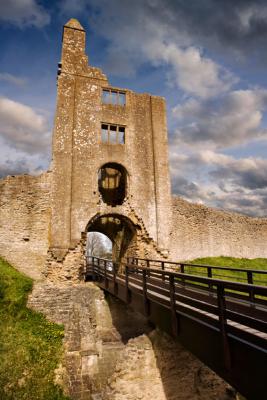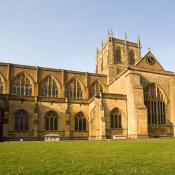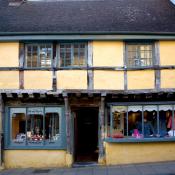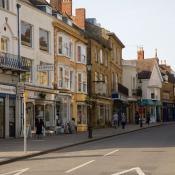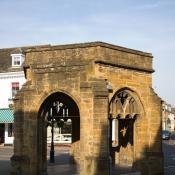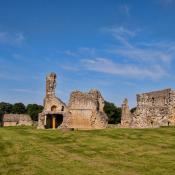
Sherborne has much to offer visitors and is one of the most beautiful towns in England. Situated on the Dorset and Somerset border it has excellent transport links making it a great centre from which to explore the Wessex area of Dorset and the neighbouring counties of Somerset and Wiltshire. The town has an attractive shopping centre with a large selection of individual shops, including craft shops and boutiques. It is also an important centre for dealers in art and antiques. There are a number of excellent hotels and other accommodation. In addition there are plenty of bars, cafés and restaurants in Sherborne.
Sherborne came from the Saxon words “scir burne” meaning the place of the clear stream . The town became the capital of Wessex and two kings, Ethelbert and Ethelbald were buried in the Abbey here. There were the two elder brothers of Alfred the Great.
The beautiful Abbey Church of Sherborne dates from Saxon times. At the beginning of the 8th century, the large Diocese of Winchester was split in two, and St Aldhelm was appointed the first Bishop of the West Saxons. The Bishop’s seat was moved to Old Sarum, the old name for Salisbury, in 1075 and the church was taken over by the Benedictine monastery. When Henry VIII dissolved the monasteries in the 16th century, Sir John Horsey acquired the Abbey.
Sherborne Boys School was founded in 1550 and was built on the remains of the abbey buildings. It was originally known as King Edward’s School. Sherborne remains one of the great public schools of the country and still uses monastic buildings attached to the Abbey Church. The roof of the Abbey is the earliest great fan vault in existence. In the Lady Chapel is an engraved glass reredos by the artist Whistler. There are many more interesting features and the Abbey Church is well worth a visit.
In the 12th century Roger de Caen, who was both the Bishop of Salisbury and the Chancellor of England, built was is now known as Sherborne Old Castle. In 1592, Elizabeth I gave the castle to Sir Walter Raleigh. Shortly after this, Raleigh fell out of favour when he secretly married Bess Throckmorton, one of the Queen’s maids of honour, who was pregnant with his child. The Queen was not pleased, even though Raleigh had been replaced by a new favourite, the Earl of Essex. She imprisoned the two in the Tower of London, but later allowed them to retire to Sherborne. By this time, the old castle was damp and draughty so Raleigh built Sherborne Lodge in the grounds. This building is now known as Sherborne Castle. When besieged by General Fairfax during the English Civil War, it took 16 days to capture and was described by Cromwell as 'a malicious and mischievous castle'. Since then only ruins remain in the middle of parkland, now in the care of English Heritage.
The present Sherborne Castle has been the home of the Digby family since 1617. It was visited by both William of Orange and George III. The house contains impressive collections of art, china and furniture. The gardens and lake were created by Capability Brown in the middle of the 18th century.
The picturesque 15th century Almshouses of St John the Baptist and St John the Evangelist are now occupied by elderly residents. The original illuminated Royal Licence and Foundation Deed are still in existence, as is a letter from Sir Walter Raleigh to the Master of the Almshouses. In addition, there are many more medieval buildings, including the 16th century Julian House, which was originally the Hospice of St Julian of Norwich.
There are two interesting waterwheels in Sherborne. The Castleton Wheel was originally built in 1869 and rebuilt some thirty years later. This wheel can be seen working on open days. The Nether Cerne Waterwheel is not in working order but is believed to be one of the oldest completely iron wheels in England.
Sherborne’s small museum contains an excellent local history section with many early photographs and drawings about the town and the area. There are other displays including specific ones featuring the Abbey and the two castles.



